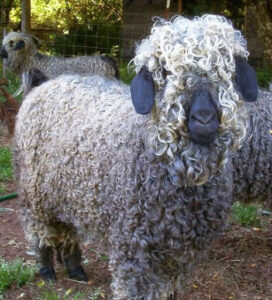Characteristics of Mohair Fiber
Mohair Fiber:
Mohair, the lustrous fleece of the Angora goat, is one of the most important specialty animal fibers, detailed on the frontispiece. This is true although it represents less than 0.02 % of the total wool fiber production. Mohair fiber is largely produced in South Africa and the United States of America (Texas) but also in Turkey, Argentina, Lesotho, Australia, and New Zealand. South Africa presently accounts for approximately 60% of the world’s production of mohair fiber. So it is natural animal fiber, very useful for us. In this article, we explain Characteristics of Mohair Fiber in details.
Before discussing the Characteristics of Mohair Fiber, we can it difinately luxurious wool fiber. Buying clothes of Mohair is very expensive. What are the Characteristics make them expensive? Lets find this below.
General Characteristics of Mohair Fiber
Mohair is characterized by excellent luster, durability, elasticity, resilience, resistance to soiling, soil shedding, setting, strength, abrasion resistance, draping, moisture and perspiration absorption and release, insulation, comfort, and pleasing handle, and by low flammability, felting and pilling.
Its good insulation makes mohair fabrics light-weight and warm in winter and comfortably cool in summer, which is also a function of the fabric and garment construction. Although mohair has proved extremely popular in many applications it has some limitations in certain apparel applications, because of its coarseness relative to other types of apparel fibers such as, for example, cotton. Its outstanding properties, such as resilience and durability, also make it particularly suitable for household textiles, such as upholstery fabrics, curtains, and carpets.

Listed are the main distinguishing characteristics of Mohair Fiber
1. Flammability
Mohair has low flammability, in common with other animal fibers such as wool. When exposed to a naked flame, it burns at a low temperature and tends to shrink. The flame produces a bead-like ash, but the fiber will stop burning almost as soon as it is taken away from the flame
2. Durability
Because mohair’s structure is easily pliable, it can be bent and twisted repeatedly without damage to the fiber, making it one of the world’s most durable and strong animal fibers.
3. Elasticity
Mohair is very elastic. A typical mohair fiber can be stretched to 130% of its normal length and will still spring back into shape. Because of the fiber’s resilience, mohair garments resist wrinkling, stretching, and bagging during wear.
4. Moisture absorption
Animal fibers, such as mohair, can absorb moisture from the atmosphere readily (up to 30 % without feeling wet). Because mohair dries slowly the danger of getting a chill is reduced
5. Setting
Mohair may be set to retain extension or deformation more readily than most other animal fibers. The fiber’s setting ability is capitalized on in the manufacture of curled-pile rugs and imitation Astrakhan rugs.
6. Luster
Mohair’s well-known luster is caused by its closed (unpronounced) scale formation and can be preserved or even enhanced by careful processing and dyeing.
7. Dyeing
It is possible to dye mohair brilliant colors that resist time, elements, and hard wear. From this property has come the name ‘The Diamond Fibre’.
8. Soiling resistance
Because of its smoothness and other characteristics, mohair generally exhibits good soil resistance and desoiling.
9. Felting
Mohair has a very low tendency to felting process of Fabric joining as it is natural wool fiber.
10. Light weight
Mohair blends well with wool and can produce smooth yarns, enabling fabrics to be produced that are noted for coolness, such as lightweight summer fabrics. It is unsurpassed in tropical suitings, largely because it combines coolness with durability; the material is also effective when made into linings because of its good moisture absorption and drape characteristics.
11.Length
Prized as a textile fiber because of its length, mohair fiber averages about 300 mm for a full year’s growth (i.e. 25mm per month), and 150mm when the animals are shorn biannually. For example, exceptionally long fibers (up to 300mm) are used to make women’s switches, doll’s hair, and theatrical wigs.
Because of the high durability, softnesss, luster in Characteristics of Mohair Fiber; it is used for luxurious sweater, blankets making.
- Reference: https://books.google.com/books?id=EjDMDwAAQBAJ
- http://182.160.97.198:8080/xmlui/bitstream/handle/123456789/1390/Chapter%203-4.pdf?sequence=3
